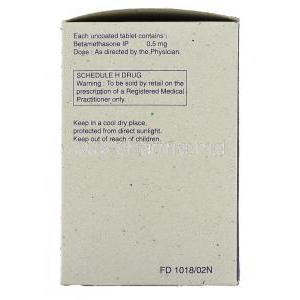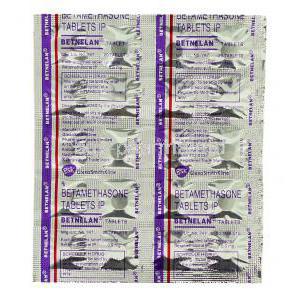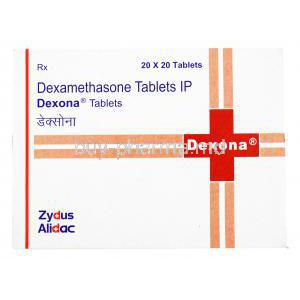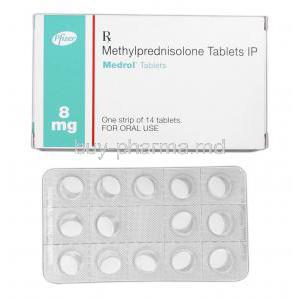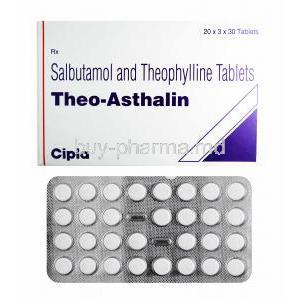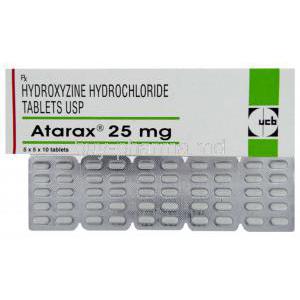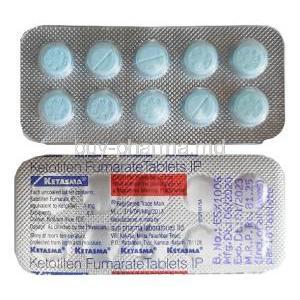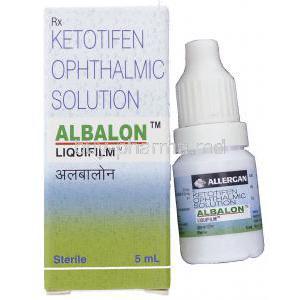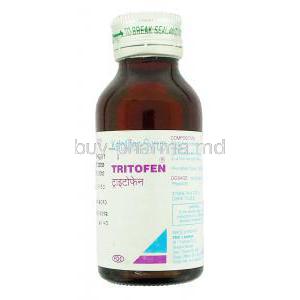Betamethasone
- I. Introduction to Betamethasone
- II. Composition and Pharmacokinetics of Betamethasone
- Indications and Therapeutic Uses of Betamethasone
- IV. Dosage and Administration Guidelines for Betamethasone
- V. Betamethasone and Special Populations
- VI. Contraindications of Betamethasone
- VII. Side Effects of Betamethasone
- VIII. Cautious Use of Betamethasone
- IX. Overdose Situations and Management
- X. Storage and Stability of Betamethasone
- XI. Warnings and Precautions
- XII. Conclusion: Balanced Perspective on Betamethasone Use
I. Introduction to Betamethasone
A. Definition and Class of Drug
Betamethasone is a steroid belonging to the corticosteroid class. It has anti-inflammatory and immunosuppressive properties, which make it an effective medication for managing conditions characterized by inflammation. It is available in creams, ointments, lotions, and injections as it is produced synthetically. Its effectiveness in treating inflammation is significantly higher than that of naturally occurring corticosteroids.
B. Historical Context and Development
Betamethasone has history dates back to the mid-20th century when scientists first created it in the laboratory. Its discovery was a breakthrough in the medical field as it opened up new possibilities for treating inflammatory and autoimmune conditions. Before its development, managing conditions was challenging and often resulted in long-term discomfort and severe patient symptoms. The introduction of betamethasone improved healthcare, equipping doctors with a powerful and effective tool to combat various ailments ranging from skin disorders to respiratory illnesses.
II. Composition and Pharmacokinetics of Betamethasone
A. Chemical Structure and Characteristics
Betamethasone, a compound consisting of 21 carbon atoms, 28 hydrogen atoms, and one oxygen atom, possesses biochemical properties that enhance its effectiveness in the body. With a weight of approximately 392.5 g/mol it demonstrates optimal solubility that enables it to efficiently penetrate cellular membranes, an essential characteristic for reaching its target location within cells. The distinctive molecular structure of this medication allows it to interact with receptors triggering a series of internal processes that ultimately result in its anti-inflammatory and immunosuppressive effects.
B. Mechanism of Action: How Betamethasone Works
Betamethasone works by attaching to receptors found in cells. Once attached this combination moves into the nucleus of the cell. Interacts with DNA to modify the transcription of specific genes. These genes mainly control the production of proteins responsible for triggering inflammatory responses. Changing the expression of these genes reduces the presence of substances that cause inflammation, thus providing relief. The immunosuppressive effect of betamethasone is a result of its ability to hinder the growth and multiplication of lymphocytes, which are white blood cells involved in immune responses. It's important to note that each person's response to betamethasone may vary due to factors like dosage, duration of treatment, and individual physiological characteristics. Therefore it is crucial to have personalized medical supervision when using this medication.
Indications and Therapeutic Uses of Betamethasone
Approved Medical Uses
Betamethasone is a type of medication known as a corticosteroid. It is used to treat medical conditions such as severe allergic reactions, asthma1, rheumatoid arthritis2, psoriasis3, ulcerative colitis2, Crohn’s disease2, lupus2, multiple sclerosis2, dermatitis2, eczema31, allergic rhinitis (hay fever)1, autoimmune hepatitis2, bursitis (joint inflammation)2, tendinitis (tendon inflammation)2, tennis elbow (elbow pain)2, osteoarthritis (joint degeneration)2, ankylosing spondylitis (spine inflammation)2, gouty arthritis (joint swelling due to uric acid crystals)2, acute and chronic lymphocytic leukemia and lymphoma (blood cancers)2, multiple myeloma (cancer of plasma cells in bone marrow)2, idiopathic thrombocytopenic purpura (ITP) (low platelet count due to immune system malfunctioning)2, hemolytic anemia (autoimmune destruction of red blood cells)2, neurodermatitis or lichen simplex chronicus (chronic skin inflammation accompanied by itching and scratching behaviors)312, lichen planus (inflammatory skin condition characterized by itchy purple bumps or lesions on the skin or mucous membranes, like the mouth or genital area)3 and granuloma annulare3.
Here are some references that you can check out for more information:
Off-Label Uses and Emerging Therapies
Betamethasone has also been used for conditions that are not officially approved, such as swelling of the brain (cerebral edema)1, a neurological disorder called cerebral palsy1, an endocrine disorder known as Cushing's syndrome2, a genetic disorder called Duchenne muscular dystrophy2, viral infections like hepatitis B and C3, lung inflammation caused by exposure to allergens (hypersensitivity pneumonitis)3 and inflammatory bowel disease (IBD)3. However, it is important to note that the use of betamethasone for treating IBD is not recommended due to its potential to cause side effects3.
Here are some references that you can check out for more information:
IV. Dosage and Administration Guidelines for Betamethasone
A. Standard Dosage Parameters

The dosage and administration of Betamethasone can vary based on an individual's health condition, the severity of the condition being treated, and the specific form of the drug. However, some guidelines are usually followed. For adults, the initial dosage typically ranges from 0.6mg to 7.2mg per day, depending on the disease being treated. Depending on its formulation, the medication can be taken orally and administered through injections. If it is in a form, it is applied directly to the affected area of the skin. It's essential for patients to strictly follow their healthcare provider's prescription instructions, as using this medication can lead to adverse effects or compromise its effectiveness in treating the condition.
B. Special Considerations for Dosage and Administration
While the parameters mentioned above serve as a starting point, several factors might require dosage adjustments. For example, patients dealing with resistant conditions might need higher initial doses. In cases of long-term drug use, it may be necessary to reduce the dosage to minimize the risk of adrenal insufficiency. During situations like surgery or acute illness, it may be required to increase the doses. Factors such as the patient's response to the medication, their tolerance level, and their specific condition can also influence the dosage and administration plan. Therefore, monitoring the patient's progress is crucial to make any necessary adjustments.
V. Betamethasone and Special Populations
A. Administration to the Elderly: Precautions and Guidelines
Elderly individuals might be sensitive to betamethasone because their bodies undergo specific physiological changes as they age, such as a slower metabolism and reduced organ function. Therefore, exercising caution when prescribing and administering this medication to adults is essential. It is generally recommended to start with the possible dose and adjust gradually based on the patient's response and tolerance. Due to the probability of taking multiple medications (polypharmacy) in this age group, continuous monitoring for potential side effects and drug interactions is crucial for elderly patients.
B. Betamethasone Use in Pregnancy and Nursing: Implications and Safety
While betamethasone can be helpful in medical scenarios during pregnancy, it is essential to carefully consider its usage due to potential risks to the developing baby. For example, betamethasone is sometimes given to women at risk of entering labor early to support the maturation of the baby's lungs. However, it is advisable to avoid prolonged use or high doses as they could lead to complications, like birth weight. Additionally, breastfeeding mothers should consult their healthcare provider before taking this medication, as betamethasone can pass into breast milk. In some instances, alternative treatments may be more suitable.
C. Administration to Children: Dosing Adjustments and Considerations
When it comes to children, extra caution should be exercised when giving betamethasone. The dosage must be adjusted based on the child's weight or body surface area and the severity of their condition. Children are more prone to experiencing side effects from this medication, such as growth suppression, intracranial hypertension, and adrenal suppression. To minimize these risks, it is essential to avoid long-term use whenever possible. When discontinuing the treatment, it is advisable to reduce the dosage to prevent withdrawal symptoms. Overall, healthcare professionals must closely supervise the use of betamethasone in populations and carefully consider the potential benefits versus the associated risks.
VI. Contraindications of Betamethasone
A. Specific Health Conditions and Betamethasone
Betamethasone, like any medication, has situations where it should not be used. It can worsen health conditions due to its strong effect on the immune system. Therefore it is important to avoid either using betamethasone or administer it with caution in some cases. For instance, patients who have fungal infections should refrain from using betamethasone as it may weaken the immune response and allow the fungal infection to spread. Moreover,, individuals with hypersensitivity to betamethasone or any ingredient in the medication should avoid using it. Similarly, patients with tuberculosis-specific eye diseases and untreated bacterial or viral infections may also be advised against taking this medication.
B. Potential Drug Interactions
Drug interactions have the ability to impact how well a medication works or even raise the chances of experiencing effects. In the case of betamethasone, there are medications that could potentially cause interactions, so it is essential to avoid or closely monitor their use. When taken together with corticosteroids, there can be an additive effect on the body, increasing the likelihood of side effects. Medications like phenytoin, phenobarbital, and rifampin which stimulate liver enzymes have the potential to reduce the effectiveness of betamethasone by improving its breakdown in the body. On the hand, drugs such as ketoconazole can inhibit the corrosion of betamethasone in the body, which could lead to an increase in its overall effects. Considering these interactions, it is crucial to inform healthcare providers about all medications being taken, including, over-the-counter drugs and supplements.
VII. Side Effects of Betamethasone
A. Common Side Effects and How to Manage Them
Although betamethasone has its benefits, for its intended purposes, it can also lead to side effects. These effects can range from inconveniences to more severe complications. Some experienced side effects include difficulty sleeping or feeling anxious, increased appetite leading to weight gain, and occasional indigestion or stomach upset. In some cases, these common side effects tend to improve over time or can be managed through symptomatic treatment. However, if these symptoms persist or worsen, it is crucial to seek medical attention from a healthcare professional.

B. Less Common but Serious Side Effects
Sometimes betamethasone may lead to rarer, more severe side effects. These could involve changes in mood issues with unusual weight gain and muscle weakness. If any of these symptoms occur, it is important to seek medical attention. It is also essential to be vigilant for signs of infection since betamethasone can disguise or worsen disorders due to its properties. Patients should remember that healthcare professionals prescribe betamethasone because they believe the benefits outweigh the risks associated with side effects.
VIII. Cautious Use of Betamethasone
A. Importance of Careful Administration
Given the risks and complications, it's important to cautiously approach betamethasone. Following the dosage and timing is vital for maximizing its therapeutic benefits while minimizing any adverse effects. It's crucial to adhere to the prescribed treatment plan and consult a healthcare professional before changing or abruptly stopping the medication. If you happen to miss a dose, take it as soon as you remember unless it's close to the time for your next scheduled dose.
B. Handling Precactions for Betamethasone
It is essential to handle betamethasone to ensure safety and effectiveness. Before and after applying the formulation, make sure to wash your hands. Unless specifically directed by a healthcare provider, avoid getting the medication in your eyes or on wounds. If accidental ingestion or eye contact occurs, seek medical attention. Remember that topical forms of betamethasone are meant for use only and should not be ingested or used in the eyes or ears unless instructed by a healthcare provider. By following these precautions, patients can safely utilize betamethasone. Maximize its therapeutic benefits while minimizing any potential risks.
IX. Overdose Situations and Management
A. Recognizing Signs of Betamethasone Overdose
An overdose of betamethasone is a medical condition that requires immediate attention. The symptoms can vary from person to person depending on factors such as the amount taken and the time since ingestion. Some possible signs of an overdose may include swelling of the face, lips, or tongue, a severe rash, hives, difficulty breathing, or fainting. An overdose can also cause symptoms to those seen in Cushing's syndrome due to high levels of corticosteroids. These symptoms may include weight gain, excess fat around the midsection, bruising, and muscle weakness. It is essential to recognize these signs to take appropriate action.
B. Immediate Response and Treatment Strategies for Overdose
If you suspect an overdose, it's essential to seek medical help. The treatment approach for an overdose of betamethasone focuses on providing support and addressing symptoms. The main goal is to remove any drug from the body, which may involve procedures like gastric lavage or administering activated charcoal in cases where the ingestion occurred recently. In addition to that, providing care such as maintaining hydration and balancing electrolytes is crucial in managing the patient's condition. While there isn't an antidote for betamethasone overdose, timely intervention can effectively address its effects.
X. Storage and Stability of Betamethasone
A. Optimal Storage Conditions
It is essential to store betamethasone to maintain its effectiveness and safety. By ensuring the drug is stored under conditions; we can ensure that it retains its pharmacological and physicochemical properties until it is administered to the patient. It is recommended to keep betamethasone at room temperature, between 20°C to 25°C (68°F to 77°F), away from light and moisture. Avoid storing the medication in places like the bathroom, as heat and humidity can cause the drug to degrade. Additionally, it's essential to keep betamethasone in a location that is out of reach for children and pets in order to prevent accidental ingestion.
B. Shelf-life and Stability Considerations
The effectiveness and safety of betamethasone depend on its stability. Like other medicines, it has a specific duration during which its potency gradually decreases. You can find the shelf life information on the product packaging. It's essential to follow those guidelines strictly. When medications expire or are no longer needed, it is crucial to dispose of them instead of flushing them down the toilet or pouring them into drains unless instructed otherwise. By adhering to these storage and stability recommendations, individuals can ensure they use betamethasone safely and effectively, thus maximizing its benefits.
XI. Warnings and Precautions
A. Important Precautions to Consider When Using Betamethasone
While betamethasone offers benefits, it is essential to take certain precautions to ensure its safe and effective use. Due to its ability to suppress the system, betamethasone can lower infection resistance, mask the symptoms of a disease, and reduce the body's response to vaccines. Therefore, individuals undergoing treatment must promptly report any signs of infection or changes in health to their healthcare provider. It is important to note that long-term use of betamethasone may lead to insufficiency. As a result, it is advised not to discontinue the therapy. If long-term treatment needs to be stopped, it should be done gradually under supervision. Patients with health conditions like diabetes, hypertension, and osteoporosis should take special precautions when using betamethasone as it may worsen these conditions. By adhering to these precautions, patients can help minimize risks associated with using betamethasone.
B. Risks and Warnings Related to Long-Term Use
Using betamethasone for a period, especially in high doses, may have certain risks and complications. These can include the development of Cushing's syndrome, characterized by weight gain, high blood pressure, and changes in fat distribution throughout the body. It can also result in decreased bone density leading to osteoporosis. Additionally, it can potentially worsen existing diabetes or even trigger new-onset diabetes. Another risk is an increased likelihood of experiencing eye problems like cataracts or glaucoma. Therefore when long-term use is necessary, it is essential to use the effective dose and closely monitor patients for any potential complications.
XII. Conclusion: Balanced Perspective on Betamethasone Use
A. Weighing Benefits Against Potential Risks
Betamethasone, a corticosteroid, provides significant advantages in treating various ailments ranging from skin disorders to respiratory problems. Nevertheless, it is crucial to consider and weigh these benefits against the potential risks and unwanted outcomes of prolonged usage. Healthcare professionals strive to find a balance by utilizing betamethasone and closely monitoring its effects to maximize its therapeutic benefits while minimizing potential adverse consequences.
B. Future Research and Developments in Betamethasone Use
Ongoing progress in research keeps uncovering more about the various uses of betamethasone. In the future, we might see advancements in how it's delivered improvements in its formulation and exciting new therapeutic applications. The medical community remains focused on safety while exploring the potential of this versatile drug to improve patient care. Ultimately betamethasone proves to be an asset in the field of medicine. However, like any medication, it should be used responsibly and under the guidance of a healthcare professional to ensure its safe and effective usage.








